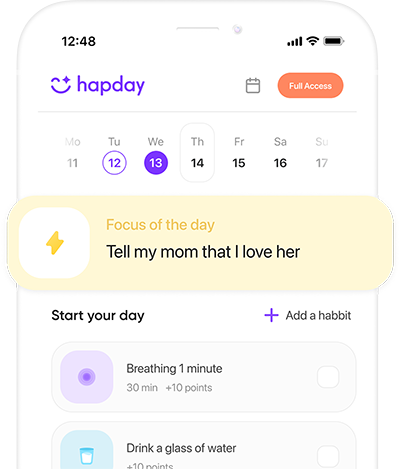Table of Contents
- What Exactly is Burnout?
- The Underlying Causes
- Ripple Effects of Burnout
- Navigating Burnout: Strategies to Explore
- Spotting the Signs Early
- Crafting a Balanced Work-Life Equation
- Embracing Stress Management Practices
- Boosting Job Control
- Creating a Supportive Culture
- Ensuring Fairness and Validation
- Long-Term Strategies for Wellbeing
- Commit to Growth and Learning
- Prioritize Holistic Health
- Build Resilience
- Champion Mental Health Awareness
- Monitor and Respond
- Conclusion
What Exactly is Burnout?
Burnout isn’t just about feeling tired. It taps into physical, emotional, and behavioral realms, often manifesting in ways that can sneak up on us. As explored in the Journal of Applied Psychology, individuals grappling with burnout might experience:
- Emotional Exhaustion: Feeling emptied of physical and emotional resources.
- Depersonalization: Adopting a dismissive attitude towards work and colleagues.
- Reduced Professional Efficacy: Noticing a slip in job performance and motivation.
The Underlying Causes
Burnout doesn’t stem from one simple source. It’s a mosaic of factors including:
- Excessive Workload: Facing demands that outstrip your capacity to meet them.
- Lack of Autonomy: Feeling like a mere cog in the machine without any control over your work.
- Insufficient Recognition: When efforts and successes go unnoticed.
- Isolation: Weak interpersonal bonds within workplace communities.
- Unfair Treatment: Encountering bias or inequity in professional settings.
- Value Misalignment: A clash between personal ethics and organizational culture.
Ripple Effects of Burnout
The consequences of burnout ripple broadly, affecting not just individuals but also their organizations and the wider community. Gallup’s research reveals that burned-out employees are far more likely to call in sick or start a job hunt. Moreover, links between burnout and health issues like heart disease, depression, and anxiety are well-documented. Addressing burnout is thus both a personal and organizational priority.
Navigating Burnout: Strategies to Explore
1. Spotting the Signs Early
Recognizing burnout is the stepping stone to managing it. Encourage awareness by hosting workshops or stress management sessions within your organization to illuminate the warning signals before they snowball.
2. Crafting a Balanced Work-Life Equation
A survey by Harvard Business Review highlights that employees with a balanced work-life setup are significantly more productive. Consider:
- Flexible Work Options: These include remote work, adaptable hours, and shorter workweeks.
- Leave Policies: Encouraging the use of mental health days and regular vacations to recharge.
3. Embracing Stress Management Practices
Activities such as mindfulness, yoga, or meditation can drastically cut stress levels. Mindfulness-Based Stress Reduction (MBSR) programs, as documented in the Journal of Occupational Health Psychology, highlight profound benefits like stress reduction.
Mindfulness in Action
- Body Scan: Scan through your body, consciously releasing tension.
- Deep Breathing: Use breathwork to soothe and calm the mind.
- Focused Meditation: Engage in moments of meditation to anchor yourself in the present.
4. Boosting Job Control
The more control employees have over their work, the less likely they are to experience burnout. Encourage decision-making and innovation, bolster skills through training, and promote autonomy to foster a thriving work environment.
5. Creating a Supportive Culture
Building a nurturing work atmosphere involves promoting teamwork and fostering open communication. Regular team-building activities and spaces for honest feedback can do wonders.
6. Ensuring Fairness and Validation
Fairness and acknowledgement go a long way. Transparent policies and regular recognition initiatives can enhance employee engagement and stave off burnout.
Long-Term Strategies for Wellbeing
1. Commit to Growth and Learning
Opportunities for continuous development boost satisfaction and a sense of achievement. Workshops, mentoring programs, and professional courses are excellent avenues for growth.
2. Prioritize Holistic Health
A healthy body contributes significantly to a healthy mind. Encourage:
- Physical Activities: Exercise to naturally lift mood and reduce stress.
- Nutritious Eating: Fuel your body and mind correctly.
- Quality Sleep: Crucial for cognitive function and emotional stability.
3. Build Resilience
Resilience empowers individuals to navigate challenges effectively. Strengthen it through building connections, leaning into change gracefully, and setting tangible, achievable goals.
4. Champion Mental Health Awareness
When workplaces openly discuss mental health, they normalize seeking help. Equip managers with mental health training and make counseling services accessible.
5. Monitor and Respond
Implement regular assessments and feedback loops to gauge employee satisfaction. Use this insight to adapt strategies and address issues before they escalate.
Conclusion
Tackling burnout demands a nuanced, comprehensive approach. By crafting supportive work environments and nurturing personal and professional growth, both individuals and organizations can manage burnout and foster sustained wellbeing.
As the boundaries between work and personal life blur, embedding these strategies is not just beneficial but essential to thriving amidst life’s challenges. By embracing these pathways, we can build resilience and wellbeing that’s as enduring as it is vital.



I really appreciate this article! The emphasis on recognizing the signs of burnout early is so crucial. Many people don’t realize how quickly it can sneak up on them. It’s essential for workplaces to provide resources and training to help employees identify these signs. What are some effective ways organizations can implement these strategies?
That’s a great point! I think workshops and regular check-ins could really help foster an open dialogue about mental health in the workplace.
Absolutely! Creating a culture that prioritizes mental health awareness can make a huge difference in reducing burnout.
This post is spot on! Crafting a balanced work-life equation seems like such a simple idea, but it’s often overlooked. Flexible hours and encouraging time off can drastically improve employee morale and productivity. I’d love to hear more about specific examples of companies doing this well.
I agree! Companies like Google and Netflix have really set the bar high with their flexible policies. It definitely pays off in employee satisfaction!
…but let’s be real, not all workplaces are on board with these ideas yet! Stress management practices like mindfulness sound wonderful, but they need real commitment from leadership to be effective. Otherwise, it’s just lip service, right? Anyone else feel frustrated by the gap between theory and practice?
@ChillVibes Absolutely! Sometimes it feels like companies are just checking boxes instead of genuinely caring about their employees’ wellbeing.
#Burnout is no joke! This article hits home for many of us who have felt those overwhelming feelings at work. I personally found yoga to be incredibly helpful during my burnout phase; it’s amazing how moving your body can clear your mind!
@BubblyBiscuit Yes! Physical activity really does wonders for our mental state. Have you tried meditation as well? It’s equally beneficial!
This article is a breath of fresh air! The insights on burnout are spot on. It’s amazing how many people overlook the signs until it’s too late. The strategies suggested, like mindfulness and fostering a supportive culture, are practical and can truly make a difference in the workplace. Thanks for shedding light on such an important topic!
While I appreciate the effort put into discussing burnout, I can’t help but feel it’s just another corporate buzzword. Employers talk about mental health, yet they continue to pile on unrealistic workloads without any real change in culture. Until companies genuinely commit to addressing these issues, articles like this feel somewhat hollow.
I see your point, but isn’t it up to us as employees to push back? If we remain silent while being overworked, things will never change.
This article provides a thorough breakdown of burnout and its effects on both individuals and organizations. It’s crucial for leaders to understand these dynamics if they wish to maintain productivity without sacrificing employee wellbeing. The suggestion for flexible work options is especially timely given our evolving work environment.
‘Spotting the Signs Early’? That’s easier said than done! Many companies still don’t take mental health seriously until it leads to high turnover rates or crises among their employees. There needs to be accountability from management; simply offering workshops won’t cut it if there’s no real intention behind it.
‘Crafting a Balanced Work-Life Equation’? Sounds lovely in theory! But let’s be honest: most workplaces prioritize profits over people. You can have all the yoga sessions you want, but if the workload remains crushing, it’s just window dressing.
‘Mindfulness in Action’ sounds great until you realize that your boss is standing behind you asking for that report while you’re trying to meditate! Maybe we need ‘mindfulness with deadlines’ instead—now that’s a true test of serenity!
‘Building Resilience’ is indeed vital when discussing burnout management. However, this should also encompass emotional intelligence training for leaders so they can effectively support their teams during high-stress periods. Only then can we hope for meaningful change.
‘Creating a Supportive Culture’ is mentioned as critical—yet many workplaces lack basic recognition initiatives that could foster goodwill among employees. Simply having team-building activities won’t suffice unless there’s genuine recognition of individual contributions.
I found it quite amusing how every tip provided seems straightforward yet so complex in execution! If only implementing these suggestions were as easy as reading them! You know what they say: ‘Easier said than done!’ Honestly though, some real-life examples would really spice things up here.
True! However, at least having these strategies laid out gives us something to aim towards even if it feels daunting.
Exactly! Every little step towards creating awareness counts; let’s not underestimate the power of knowledge.
I love how this article emphasizes growth and continuous learning! In my opinion, cultivating an environment that encourages professional development could lead not only to reduced burnout but also increased job satisfaction overall!
That sounds great in theory; however, I wonder if organizations will really invest in their people beyond just lip service.
Let’s remain optimistic! Change often begins with conversations like this one!